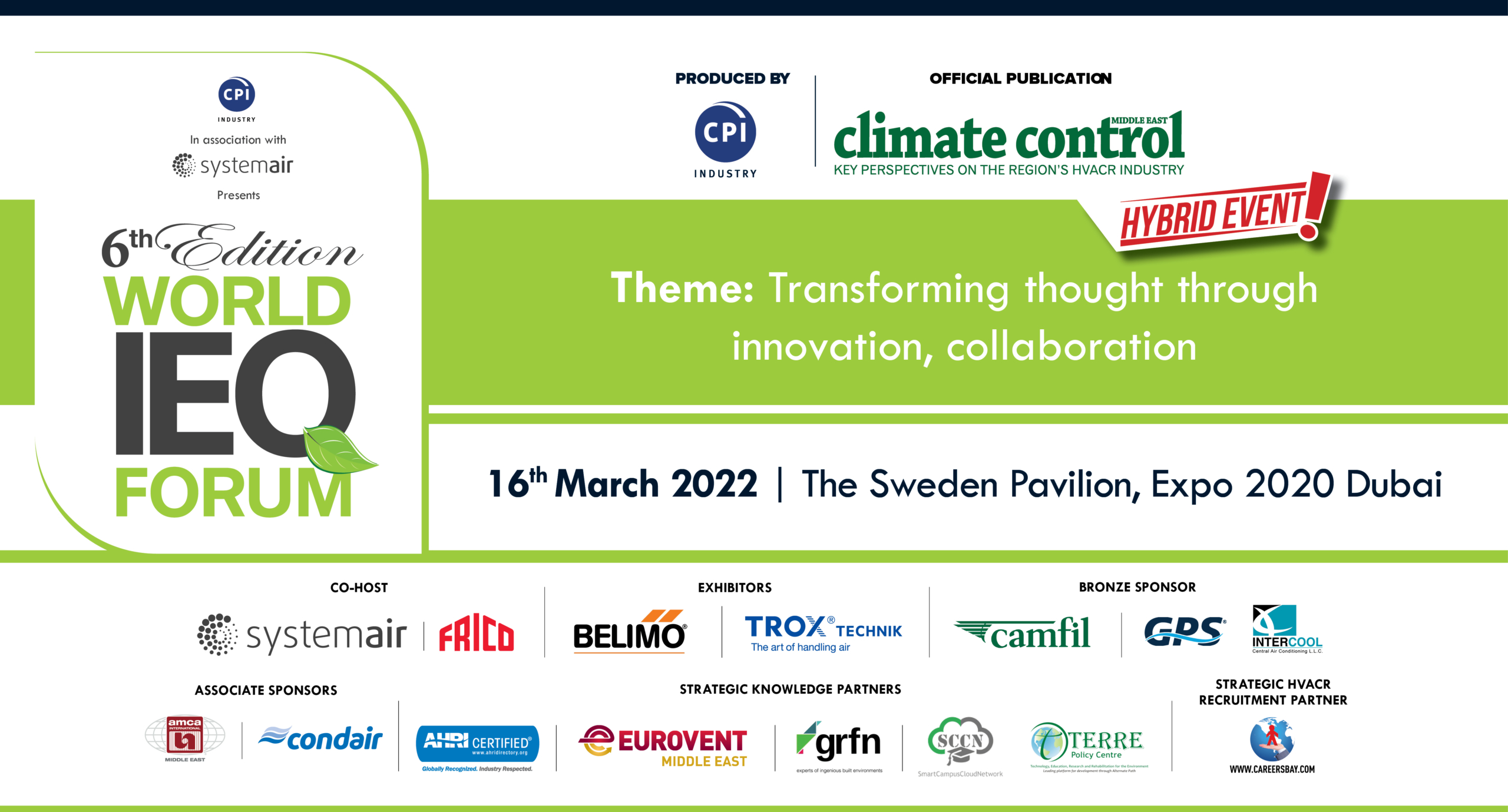
- This event has passed.
6th edition of the World IEQ Forum
March 16, 2022 @ 12:00 - 20:00 +04

The dramatic unfolding of a cataclysmic event like the pandemic has had a profound impact on the human psyche. Whilst it has triggered talk about giving greater importance to indoor environmental quality – specifically, to indoor air quality – the globe is substantially invested in the drive towards greater energy efficiency, as evidenced by the intensity of discussions in the post-Paris Agreement era.
The need for improving energy efficiency is an indispensable target. It is vitally important to curb energy use in the built-environment to lower greenhouse gas emissions and to optimise the Total Cost of Ownership in an increasingly fragile financial environment.
Given the situation, any action that is likely to trigger greater energy use will continue to attract resistance from climatologists, policymakers and building owners, amongst other climate stakeholders.
The thought-process on climate change is firmly established. Hence, it becomes imperative to transform thought through innovation and collaboration.
Whilst the broader objective of the 6th edition of the World IEQ Forum is to highlight the importance of ‘extraordinary IAQ’, an equally important aim is to help establish a structured framework, leading to the successful application of innovation, allied with collaboration, coordination and sustained engagement, for climate change mitigation.
It is a well-acknowledged fact that there is no shortage of innovative design, construction, installation and O&M practices that can complement innovation in equipment towards the goal of greater energy efficiency and, subsequently, profound IAQ interventions. The various elements either exist or are in various stages of further development. And if allowed to perform to their fullest potential – together or as clusters of elements – they can lower energy use to such an extent that would compel climatologists, policymakers and building owners to allow even energy-intense IAQ-related engineering approaches and technologies to be incorporated in buildings. (It ought to be noted that the goal still would be to identify and develop IAQ-related design, construction and installation models and technologies that would consume as less energy as is possible.) To put it differently, the proposal is to achieve unprecedented energy efficiency in the built-environment that would compensate or justify a possible increase in energy use to steadfastly meet the need for extraordinary IAQ objectives.